Smart thermostats, access control and anti-theft alarm systems have gradually become the standard configuration of building management systems in smart buildings and smart home applications. In these applications, the fire alarm system appears to be particularly important because the system is concerned with personal and property safety. To ensure the reliability of the fire alarm system, TDK Group has launched a series of EPCOS key components, the most important of which is overvoltage protection solutions.
Office buildings, hotels, airports, and shopping malls are all large-scale construction sites for people. Therefore, they must be equipped with automatic fire alarm systems. The system is a complex system of sensors, actuators, power supplies, and data transmission units. In general, each fire detector can be linked to the controller via a network.
According to different building structures and layouts, we use ring and star network topology. The controller performs two specific tasks: it periodically scans the installation equipment. If it is subsequently discovered that the detector has been activated, the controller must trigger all sounds and visual alarms in the building to perform the necessary actions, close the fire door, and pass the LAN or move. The communications network performs fire services.
For example, a fire alarm system can be powered by a 24V power supply. Because the system still needs to continue to work when the power supply fails, the fire alarm system power supply integrates the UPS. Even if the power is off for a long time, the system can ensure the proper power supply voltage. In addition to fire detectors, motion detectors and glass break sensors must also be integrated into the system. Figure 1 shows the basic structure of a fire alarm system.
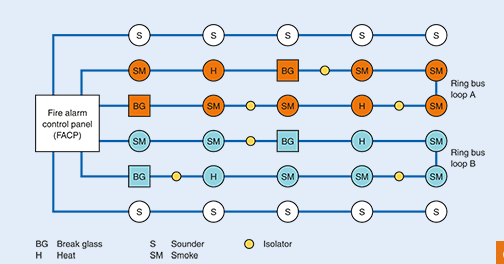
Figure 1: Fire alarm system structure, in which the fire detector network adopts a dual-ring topology. In addition, audible warning devices (loudspeakers) can also operate in a star network topology.
Fire detectors use different Sensor technologies depending on their application requirements:
Optical sensor for detecting smoke
Temperature sensor for detecting temperature rise
Detecting CO and CO2 gas sensors
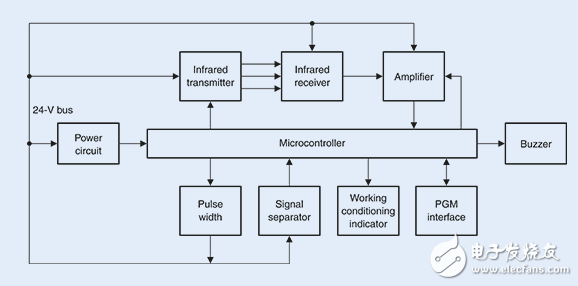
Figure 2 shows a block diagram of a fire detector with an optical sensor. Fig. 2: Inside the fire detector, the microcontroller (3.3 V), infrared emitter and receiver (10 V) are supplied via the power bus (24 V).
Severe overvoltage protection requirementsDue to the complexity of the work environment, the fire alarm system needs to deal with various over-voltage phenomena, such as overvoltage generated by data and power cables. Both the power line and the signal line are affected by overvoltage. Due to the long system cable and various Coupling conditions, the overvoltage problem is even more serious.
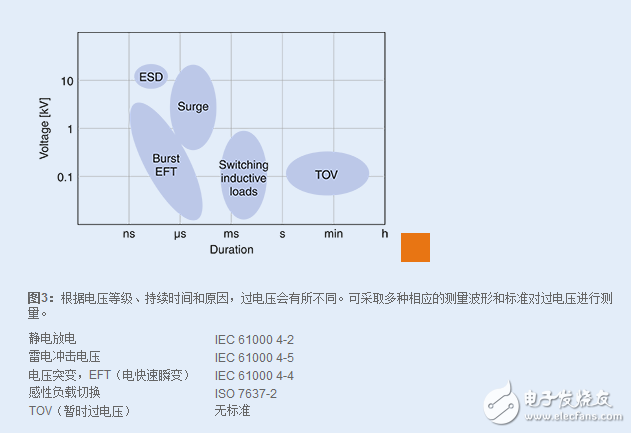
Figure 3 outlines the possible overvoltage types.
EPCOS varistors from the TDK Group are suitable for various overvoltage types. However, it must distinguish between monolithic and stacked.
Monolithic varistors are designed for high voltages and high currents and are therefore suitable for power input. In addition to conventional chip varistors, the T14 and T20 series of EPCOS ThermoFuseTM varistors are particularly suitable for safety-related applications. Its operating voltage is 130 VRMS to 1000 VRMS and its surge current capability is up to 10,000 A (8/20 μs).
If the ThermoFuse varistor is overheated, the integrated fuse will isolate the varistor from the network, preventing any ignition on the printed circuit board or damaging components located near the varistor. The fuses and varistors are mounted inside plastic housings and, like varistor coatings, are made of flame-retardant materials.
These elements have three connections: two for the power cable and one for monitoring the output, for example via which the status of the elements can be displayed via the LED. For ease of replacement, these varistors can be mounted using printed circuit board terminals.
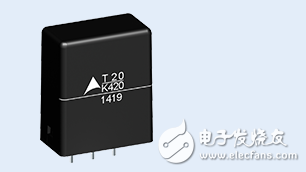
Figure 4: ThermoFuse series varistors that prevent overheating. In addition, the component status can be continuously monitored through the monitoring output.
For the fire alarm system power bus and the fire detector itself, the CTVS surge protection series multilayer varistors are suitable for surge testing as defined in the IEC 61000 4-5 standard. Due to the multi-layer design, CTVS can provide a variety of rated voltage products that meet the needs. Surface-mount components with package sizes 0805 to 2220 are designed for pulse currents of 8/20 μs (4 kV) or 10/700 μs (2 kV) and have an inrush current capability of up to 6000 A and can withstand Up to 15 J of impact energy. These components are suitable for ESD protection requirements of IEC 61000 4-2 Level 4, and can provide reliable protection up to 30 kV.
Unlike other protection element technologies such as TVS diodes, EPCOS CTVS varistors do not degrade performance at temperatures up to 150°C.
According to the specific requirements of certain manufacturers of safety system manufacturers, CTVS series of related products have passed UL 1449 (Document No. E481997) certification.
Varistors of the same type are suitable for various voltage levels Fire detectors using optical sensors require an additional internal supply voltage level: 10 V for infrared transmitters and receivers and 3.3 V for microcontrollers.

Figure 5 shows possible circuit diagrams for generating different voltage levels inside the fire detector. Figure 5: Different voltage levels are generated inside the fire detector with a 10 V discrete solution and a 3.3 V LDO (linear regulator). Four varistors are used here to prevent overvoltages.
The input via the 24 V DC bus must always be protected against overvoltages using a varistor (CTSV1). CT2220K30G of the CTVS Surge Protection Series EPCOS shows that a SMD multilayer varistor can achieve this purpose, with a maximum DC voltage of 38 V and an inrush current design of 1200 A (8/20). Îœs). The varistor should be mounted as close as possible to the terminal block. Parallel C1 switching capacitors (such as TDK MLCC) suppress high-frequency interference. The TDK Group's product range also includes many other multilayer varistors that can be used at the input, depending on the bus voltage or surge voltage requirements.
Circuits including Q1, R1, and D1 form a voltage controller with an output voltage of 10V. To improve safety, the CT0402S11ACCG EPCOS varistors are connected in parallel with the zener diode (D1). When the diode fails, the varistor can conduct to prevent overvoltage at the base of Q1. The 10V regulated output is protected by another varistor (CTVS3). In addition, ceramic capacitors C2 and C3 are used for voltage regulation and noise suppression. The microcontroller voltage generated by the LDO controller can be protected by the CDS2C05GTA varistor (CTSV4).
Key Data of EPCOS CTVS Surge Protection Series
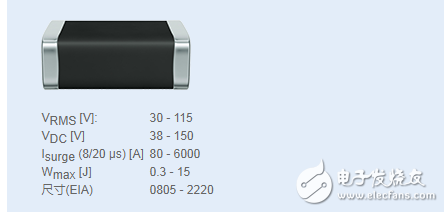
In addition to power cables, data cables need to be protected because electrostatic discharge (ESD) can cause serious damage to the interface. In view of this, TDK Group introduced EPCOS CeraDiode® high-speed data line series to provide customers with excellent protection. Since the capacitance of the series is as low as 0.6 pF (depending on the model), the signal integrity will not be affected. In addition to conventional single-circuit devices, there are array products, such as array products that use up to four data lines. Another noteworthy technical feature of this product is the extremely short response time of CeraDiodes, ≤0.5 ns.
Short circuit protection through PTC thermistorsSince all fire detectors are connected in parallel on the power bus, a short circuit of a single device may cause paralysis of the entire line section. To prevent this from happening, each fire detector must be equipped with a corresponding fuse. PTC thermistors are particularly suitable for this task because they can be used as resettable fuses. Its function principle is: When the thermistor is in the low temperature (room temperature) state, it maintains a low resistance state. If a short-circuit condition is encountered, that is, when the current is significantly higher than the specified maximum value, the PTC thermistor will heat up and immediately switch to a high-impedance state. This can limit the current to a safe level. Once the cause of the short circuit is eliminated, the PTC thermistor will re-cool and return to its low impedance state. B59873C0120A570 EPCOS PTC has a maximum load current of 90 mA at 25°C and is ideal for fire detectors.
Various fire alarm system componentsIn addition to overvoltage protection solutions, other EPCOS and TDK components are also suitable for fire alarm systems. These components include inductors and ceramics, thin-film and aluminum electrolytic capacitors, and NTC thermistors. In addition, the NTC thermistor can also be manufactured according to its thermal working principle to meet the application of fire detectors.
Optoelectronic Information Series
Photoelectric information series laboratory related equipment
Optoelectronic Information Product,Optical Bench Experiments Physics,Optical Devices Physics,Optical Physics Properties
Yuheng Optics Co., Ltd.(Changchun) , https://www.yuhengcoder.com